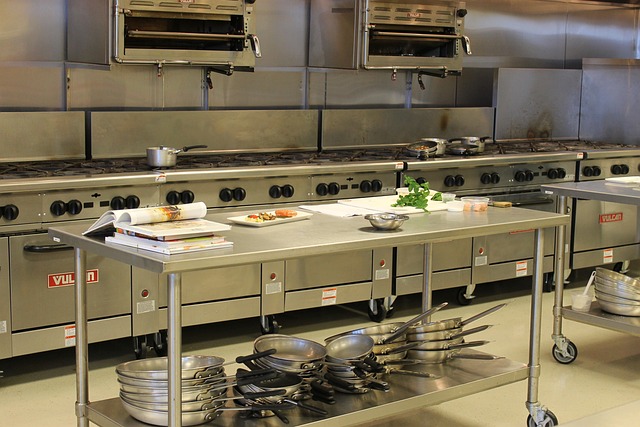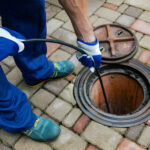
The commercial kitchen is the hub of any restaurant or food service establishment, a dynamic space where culinary creativity meets operational efficiency. Nevertheless, water damage can still pose a threat to this vibrant environment, wreaking havoc on the kitchen’s functionality and the bottom line of the business. In this article, we will examine the subtleties of dealing with water damage in a commercial kitchen, providing owners, chefs, and kitchen staff with useful insights and tips on how to effectively address and mitigate the impact of water-related incidents.
Commercial kitchens are complex ecosystems where water damage can originate from a variety of sources, such as broken appliances, leaking pipes, or even unexpected floods. These incidents have far-reaching effects that go beyond simple annoyance; they can compromise food safety, equipment performance, and general kitchen hygiene.
This guide will walk you through the specific issues that come with water damage in a commercial kitchen and stress the need for a quick and efficient response. From the initial assessment to the restoration process, the aim is to provide kitchen professionals with the information and resources they need to reduce downtime, safeguard expensive equipment, and maintain the high standards of efficiency and cleanliness that are essential in the food service industry.
See also our post on A Comprehensive Guide on Preventing Water Damage in Drought-Prone Areas
Step 1: Identify the Source of Water Damage
Recognizing Leaks
Identify and trace any visible leaks, starting from faucets, pipes, or appliances. Pay attention to signs such as water stains, dripping sounds, or increased humidity levels.
Inspect Appliances
Regularly check and maintain kitchen appliances, including dishwashers and refrigerators, to ensure there are no leaks or malfunctioning components that may lead to water damage.
Check Plumbing
Regularly inspect plumbing systems for signs of wear, corrosion, or loose connections. Addressing potential issues proactively can prevent major water damage incidents.
Assess Roofing
Examine the condition of the roof to ensure there are no leaks or weak spots. Roof issues can lead to water infiltration during heavy rain or snowfall.
Evaluate Drainage Systems
Ensure that drainage systems are clear and functioning properly. Clogged drains can cause water backup, leading to potential damage to the kitchen floor and surrounding areas.
Step 2: Emergency Response
Shut Off Water Supply
In the event of water damage, locate and turn off the main water supply to the kitchen immediately. This action helps prevent further flooding and damage.
Disconnect Power
Prioritize safety by disconnecting power to affected areas. Water and electricity are a dangerous combination, and taking this precautionary step can prevent accidents.
Remove Standing Water
Use absorbent materials like towels or mops to remove standing water from the floor. Swiftly addressing standing water prevents it from seeping into surfaces and causing additional damage.
Salvage Equipment
Move equipment and valuable items away from the affected area to prevent further damage. Quick action can save appliances and utensils from being rendered unusable.
Ventilation
Enhance ventilation by opening windows and doors to facilitate the drying process. Proper ventilation prevents the growth of mold and mildew, common issues associated with water damage.
Step 3: Assessing the Damage
Document Damage
Thoroughly document the extent of the water damage. Take photographs and make a detailed list of affected items and areas. This documentation will be valuable for insurance claims.
Inspect Structural Integrity
Conduct a structural assessment to ensure that the water damage has not compromised the integrity of the building. Consult with a professional if needed to address any concerns.
Evaluate Electrical Systems
Have electrical systems inspected to ensure they are safe and operational. Water damage can pose risks to wiring and electrical components, and prompt evaluation is essential.
Assess Flooring and Surfaces
Examine flooring materials and surfaces for signs of damage. Depending on the severity, consider whether repairs or replacements are necessary to maintain a hygienic and safe kitchen environment.
Test Appliances
Before resuming normal operations, test all kitchen appliances thoroughly to ensure they are in proper working order. Any damaged or malfunctioning equipment should be repaired or replaced.
See also our post A Comprehensive Guide on How to Save Clothing from Water Damage
Step 4: Cleaning and Disinfecting
Remove Contaminated Items
Discard any items that cannot be salvaged, such as porous materials that may harbor bacteria or mold. Prioritize the removal of contaminated items to maintain a sanitary kitchen.
Clean and Disinfect Surfaces
Thoroughly clean and disinfect all surfaces that came into contact with water. Use appropriate cleaning agents to eliminate bacteria and prevent the growth of mold.
Sanitize Equipment
Disassemble and sanitize kitchen equipment affected by water damage. Follow manufacturer guidelines for proper cleaning and disinfection to ensure food safety.
Check Food Inventory
Inspect all food items for signs of contamination or water damage. Discard any compromised items and review your inventory management practices to prevent future losses.
Monitor Air Quality
Keep a close eye on indoor air quality during and after the cleaning process. Adequate ventilation and the use of air purifiers can help maintain a healthy environment for kitchen staff.
Step 5: Repair and Restoration
Fix Structural Damage
Address any structural damage promptly to prevent long-term issues. Consult with professionals to ensure repairs are done correctly and comply with safety standards.
Repair Plumbing Issues
Fix plumbing problems identified during the assessment phase. Prompt repair prevents recurring water damage and ensures the efficient functioning of the kitchen’s water supply.
Replace Damaged Flooring
If flooring has sustained irreversible damage, consider replacing it with water-resistant materials. Proper flooring is crucial for maintaining hygiene and preventing future water-related issues.
Upgrade Appliances
Take the opportunity to upgrade or replace damaged appliances with modern, water-resistant models. This can enhance the efficiency and safety of your commercial kitchen.
Implement Preventive Measures
Incorporate preventive measures, such as regular maintenance checks and the installation of water detectors, to minimize the risk of future water damage incidents.
Step 6: Insurance and Legal Considerations
Contact Your Insurance Provider
Promptly contact your insurance provider to report the water damage. Provide them with documented evidence of the damage to facilitate the claims process.
Review Insurance Coverage
Thoroughly review your insurance policy to understand the extent of coverage for water damage. Clarify any uncertainties with your insurance provider to ensure a smooth claims process.
Legal Compliance
Ensure that your response to water damage aligns with local health and safety regulations. Compliance with legal requirements is crucial for the continued operation of your commercial kitchen.
Keep Records
Maintain detailed records of all communication with insurance providers, contractors, and relevant authorities. Accurate documentation is essential for legal and insurance purposes.
Seek Legal Advice if Necessary
In cases of significant damage or disputes with insurance providers, seek legal advice to navigate potential legal challenges effectively.
See also our post on A Comprehensive Guide on How to Save Clothing from Water Damage
Conclusion
Handling water damage in a commercial kitchen needs to be done methodically and proactively. You can handle this difficult situation by finding the source, acting quickly in an emergency, evaluating the damage thoroughly, cleaning and disinfecting the area carefully, making the required repairs, and taking care of insurance and legal issues.
Recall that a well-thought-out reaction not only reduces damages but also guarantees the long-term security and effectiveness of your commercial kitchen. By taking these actions, you can transform a crisis into a chance for resilience and enhancement of your culinary operations.






